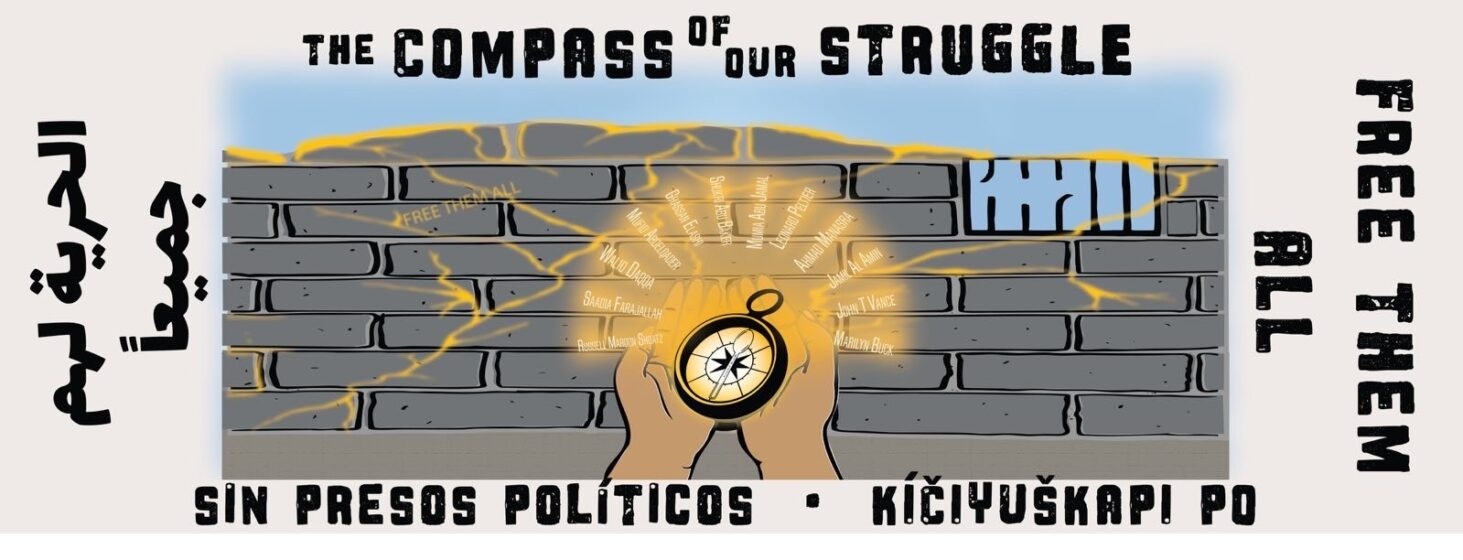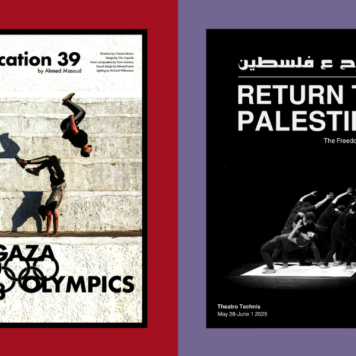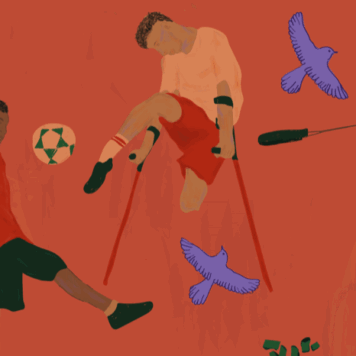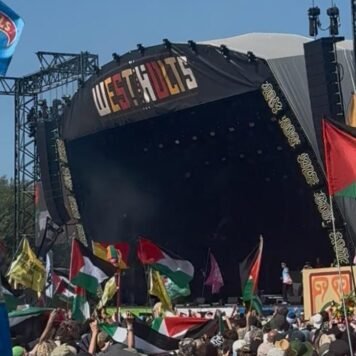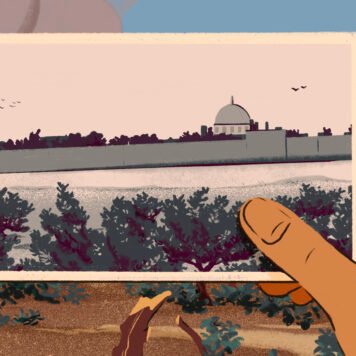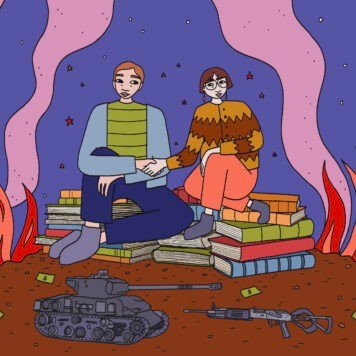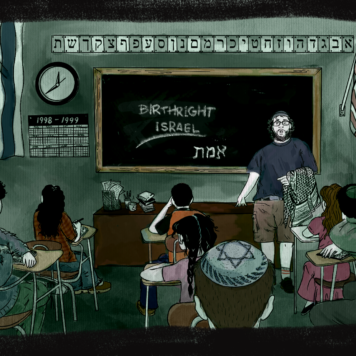On the evening of 24th November, the world watched in awe as 39 Palestinian prisoners were released from the clutches of Zionist prisons in exchange for Israeli prisoners of war. Since then, 240 Palestinian prisoners have been released in prisoner exchanges between Hamas and Israel during a temporary “humanitarian pause.”
This watershed moment has shattered decades of Zionist propaganda and shown the world that, despite 100 years of colonisation, the Zionist project has failed to break the political unity of the Palestinian people.
To truly understand the significance of this historic moment, it is important for us to contextualise the Palestinian prisoners’ struggle: to recognise that the Palestinian condition is one of imprisonment; to honour the fact that our prisoners have always been the compass of our struggle; and to insist that prisoner exchanges are a legitimate tactic for Palestinian liberation.
Only by understanding the broader context and history of the Palestinian prisoners’ will we even begin to understand the significance of this victorious moment as part of a long history of the Palestinian struggle and a necessary juncture on the path to Palestinian liberation.
The Palestinian condition as one of imprisonment
Since 7th October, all eyes have been on Gaza.
However, we know that the violence in Gaza did not begin two months ago. For 17 years, Gaza has been subject to a murderous blockade by land, air, and sea where Israel has been in control of who – and what – enters Gaza: from medicine, building materials to travel permits, and even Gaza’s calorie intake. It is for this reason that Gaza is regularly termed ‘the largest open air prison in the world.’
Taking Gaza as a case study, we can clearly see that the condition of Palestinians is a condition of imprisonment. However, this is not limited to Gaza. In the West Bank, Palestinian children are regularly arrested in night-raids in attempts to deliberately disorient and confuse them.
Many Palestinian prisoners in the West Bank are held under administrative detention which means they are not allowed to stand trial, do not know under which charges they are being held, and are subjected to repeated and indefinite renewal of their detention. Within the 48 territories (the area now referred to as Israel), Palestinians are regularly criminalised for expressing their Palestinian identity, instead expected to (in the words of Israeli Finance Minister) leave, die, or live as individuals.
Moreover, the criminalisation of Palestinians is not limited to the land of historic Palestine. In the diaspora, the global forces of Zionism and imperialism continually attempt to delegitimise the movement for Palestinian freedom and liberation.
Across the West, there have been attempts to vilify and criminalise ‘from the river to the sea’ as a protest chant – US congresswoman Rashia Tlaib was censured for saying it, Harvard’s President was condemned for using it, a Palestinian organiser in Calgary, Canada was charged by police for chanting it, and the former UK Home Secretary encouraged the police to consider the chant “as an expression of a violent desire”. The criminalisation of “from the river to the sea” is only one example of how lawfare is used against Palestinians in the diaspora to silence us, distract from Israeli war crimes, and keep us on the defensive.
Prisoners as the compass of our struggle
Given that both Palestinians and our liberation are criminalised both across historic Palestine and in the diaspora, it is no surprise that Palestinians consider our prisoners to be a representation of a nation in captivity. In fact, prisoner struggles in Palestine have always been a key facet of the Palestinian national liberation movement.
Within the confines of the prison, resistance takes on a whole new form when compared to resistance on the streets.
Many people imagine the prison to be the end of political power and influence – that there is no way to resist from within the confines of prison. However, even the austerity of prison can produce the most meaningful and inspiring acts of rebellion. When the weapons of resistance are scarce, prisoners remind us that the body is a front and we regularly see prisoners resisting through forms of protest such as hunger strike.
The most recent and prominent example has been the hunger strikes of Khader Adnan, a Palestinian prisoner who was martyred last year on the 87th day of hunger strike. However, there is a long history of hunger strikes that is not limited to Palestine, and includes other prisoners such as Irish freedom fighter Bobby Sands. Through these forms of protest, our prisoners show us that resistance is always possible, and that even within the suffering, isolation, and austerity of captivity, tools of resistance always exist.
At the same time, the Palestinian prisoner’s movement has always been more than just a movement to continue the struggle from within the confines of Israeli prisons.
The prisoner’s struggle has been an active component, a guide, for the rest of the liberation movement: it is for this reason that Palestinians often refer to prisoners as ‘the compass of our struggle’. Within the confines of Israeli prison, Palestinians create schools for liberation, developing curricula and analysis, and producing novels and essays from inside prison walls.
Our prisoners also teach us the importance of unity: when a cadre is interred, they immediately enter a new socio-political organism whereby seniority in the prisoner’s movement is based on experience and revolutionary potential and a leader, in any faction, is respected as such. In times of division on the Palestinian street, it is the prisoners’ movement that has come out demanding that the unity in prison be reflected on the ground. And in doing so, they lead by example in their vision for a liberated Palestine in which unity triumphs over factionalism.
Prisoner exchanges as a resistance tactic
Given that the Palestinian condition is one of imprisonment, it should come as no surprise that prisoner exchanges have been used historically as a tactic of the Palestinian liberation movement.
In fact, the last two weeks have shown us what Palestinians have known for over 75 years: that Israel refuses to respond to global campaigns and international pressure to release our prisoners. History has subsequently taught the Palestinian people that the liberation of prisoners is only possible through the tactic of prisoner exchange.
This moment has subsequently reaffirmed the use of prisoner exchange as a legitimate and effective tactic within national liberation and anti-colonial struggles.
Subscribe to shado's weekly newsletter
Exclusive event news, job and creative opportunities, first access to tickets and – just in case you missed them – our picks of the week, from inside shado and out.

In 1985, the Jibril Agreement took place between Israel and the Popular Front for the Liberation of Palestine (PFLP) in which 1,150 Palestinian and Lebanese prisoners were freed in exchange for three Israeli soldiers captured by the PFLP. Of those released by Israel, many of them imprisoned without charge or trial, would go on to become the backbone of the First Intifada; leading to a step closer to Palestinian liberation.
As Palestinian prisoners were released from the chokehold of Zionist prisons in the last few days, the Palestinian resistance affirmed that they will continue fighting until all Palestinian prisoners are released from Israeli prisons.
This includes prominent Palestinian political leaders and freedom fighters such as Walid Daqqah, Marwan Barghouti, Georges Abdallah, and Zakaria Zubeidi. The release of these prisoners would change the course of our liberation movement forever – providing the leadership needed to build the next generation of cadre to carry our struggle forward.
In the past weeks, prisoner exchanges have saturated our TV and phone screens. We have seen Palestinian prisoners, the majority of them children, released from Zionist prisons. Child prisoners running into the arms of their mothers, and women prisoners running into the arms of their children.
As we witness these historic and heartfelt scenes, it is important for us to historicise and contextualise over 75 years of Palestinian prisoners struggle: to acknowledge that the Palestinian condition is, fundamentally, a condition of imprisonment; that prisoners have always been the compass of the Palestinian struggle; and that prisoner exchanges have historically been used a legitimate tool in our liberation struggle.
Only through understanding this history can one truly understand the historical significance of the moment we are currently witnessing.
What can you do?
Read:
- All the Walls Will Fall: 2023 Palestinian Liberation Resource List
- Freedom or Martyrdom: Walid Daqqah’s fate is in our hands
- Palestinian Prisoners Day – We Demand the Release of Walid Daqqah
- ‘A Place Without a Door’ and ‘Uncle Give Me a Cigarette – Two Essays by Palestinian Prisoner Walid Daqqah
- The Prisoner Walid Daqqah – A stubborn conscience that cannot be seared
- Beyond a ceasefire: how humanitarian can a “pause” be?
- Why Western politicians are refusing to call for a ‘ceasefire’ in Gaza


